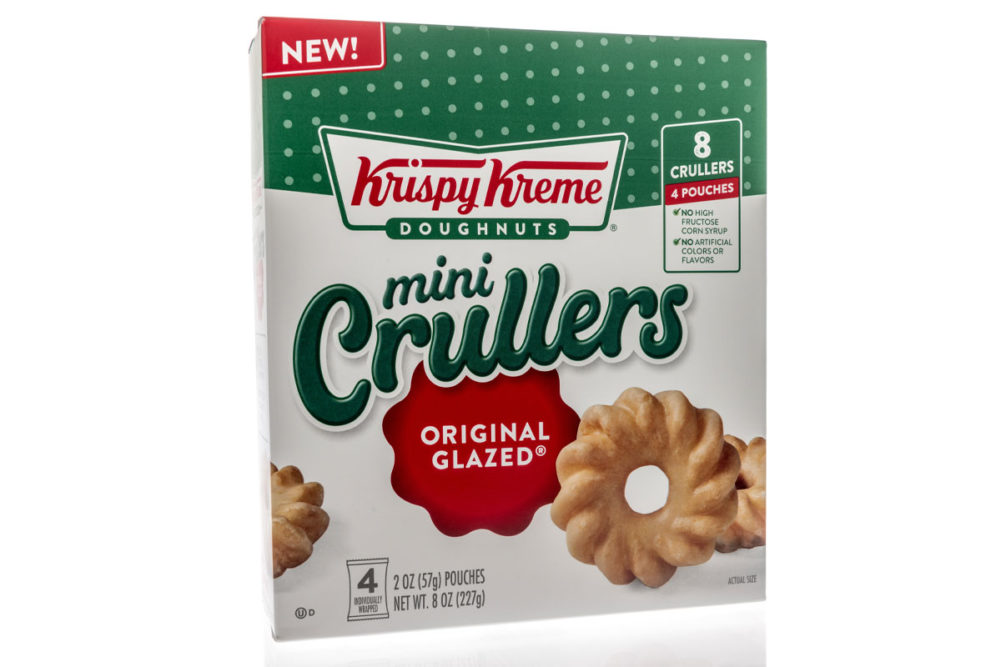A little over a year ago, in a conference call to discuss its fiscal 2021 earnings, executives at Krispy Kreme Inc. spoke glowingly of the company’s branded sweet treats business. Indications were that the business — albeit a small portion of Krispy Kreme’s portfolio — would reach profitability by the middle of 2022, approximately two years after launching the products.
But on March 10 the company filed a Worker Adjustment and Retraining Notification (WARN) with the North Carolina Department of Commerce stating its intent to close its donut manufacturing plant in Concord, NC, effective May 11. The Concord facility has been the only plant making the company’s branded sweet treats since Krispy Kreme transferred production there following the closing of its facility in Burlington, Iowa, in October 2022.
In line with the Concord plant’s closing, Krispy Kreme has ended its experiment in the extended shelf-life snack aisle.
“Our fresh daily donut business is strong, profitable and growing quickly,” Krispy Kreme said. “This is the area where we are focusing our investments and resources. Because of this, we chose to exit our underperforming, extended shelf-life snack aisle business and cease production at our manufacturing facility in Concord, NC, where these snack aisle products were made. We are supporting our affected employees, all of whom are eligible to apply for any open position or for severance and outplacement services. We are grateful to all of them. Also while we no longer plan to expand our Winston-Salem manufacturing facility and workforce, we will maintain our existing Winston-Salem operations and our nearly 300 employees.”
The Concord plant’s closing will affect 102 employees, Krispy Kreme said.
Krispy Kreme reached into retail in June 2020 with the rollout of Doughnut Bites and Mini Crullers.
The Krispy Kreme Doughnut Bites are bite-size donut holes in original glazed, chocolate and apple cinnamon flavors, while the Krispy Kreme Mini Crullers feature an enhanced recipe of the company’s cruller donuts available in original glazed and blueberry varieties.
Additionally, Krispy Kreme over the past two years has offered seasonal flavors of the new offerings, including strawberry Doughnut Bites and lemon Mini Crullers.
The products initially were available only at Walmart locations, but distribution expanded to other grocery and convenience stores. Challenges brought on by the pandemic slowed the product’s growth, but company executives in February 2022 said signs pointed to the product turning the corner.
“A launch we made in the pandemic, we definitely had fulfillment challenges,” Joshua Charlesworth, chief financial officer and chief operating officer, said during a Feb. 22, 2022, conference call with analysts. “As it expanded, it grew even faster than our supply chain was able to manage in the third quarter, which impacted profitability.
“In the fourth quarter, thanks to great efforts from the team and we put in additional lines, production lines, we’re able to significantly improve that. … And that reduced the profit impact that we had suffered in Q3.
“Q4, we’re still not profitable on branded sweet treats as it continues to grow. We’ll move into profit by the middle of 2022. And we’re keeping up with demand now, which is great. Demand … continues to build at record levels with over 15,000 distribution points across the US. So we’re pleased with that progress and pleased that we are moving towards what will be a margin — maybe potentially even accretive — business in the long run.”
Moving forward, Krispy Kreme said it will focus its efforts on its fresh business, which includes the donuts consumers buy in its shops, order through the app and website for in-shop pickup or delivery, and buy in a Delivered Fresh Daily donut case at partner grocers and retailers. The company also recently expanded its donuts market test with McDonald’s restaurants in Kentucky.
“We are maintaining our 2023 and 2026 growth and financial targets as well as our guidance,” Krispy Kreme said. “Our fresh daily global donut business continues building on its long-term trajectory to 75,000 points of access.”




